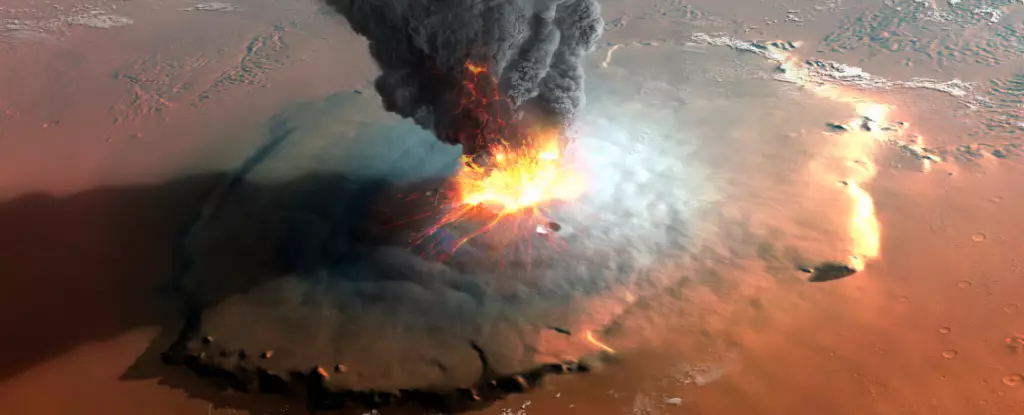Mars, the seemingly quiet and dusty planet, has a surprisingly violent history that could provide insights into Earth’s own past. Recent research reveals that Mars was once filled with volcanoes, reminiscent of our own planet before the formation of tectonic plates. The study, conducted by planetary scientist Joseph Michalski and his colleagues from the University of Hong Kong, focused on the Eridania region of Mars, collecting data from multiple orbiters to identify the scars of volcanic activity. Unlike Earth, where tectonic plates float on top of a viscous mantle, Mars is considered a one-plate planet. However, in its early years, Mars experienced massive and explosive volcanism, resulting in the formation of enormous volcanoes like Olympus Mons. This unique volcanic history makes Mars a valuable piece of the puzzle in understanding Earth’s crustal evolution.
The absence of tectonic plates on Mars allowed its volcanoes to grow to enormous sizes. The largest volcano on Mars, Olympus Mons, is 100 times bigger in volume than Mauna Loa in Hawaii, the largest volcano on Earth. Mars’ volcanoes lacked convenient outlets to release the pressure from the churning mantle, leading to their massive and explosive nature. These distinct characteristics provide a glimpse into our planet’s early geological processes and the formation of its crust.
Approximately 70 percent of Mars’ surface is over 3 billion years old, offering a largely intact record of the planet’s geological history. This record provides invaluable information about early Solar System conditions and clues to the evolution of Earth’s own crust. While the Martian crust is heavily cratered, it retains essential data about the planet’s geological past.
Michalski and his colleagues focused their study on the Eridania region due to its intensely magnetized crust and evidence suggesting the presence of an ancient Martian sea. Through the analysis of orbital data, they identified four types of volcanoes within and near the Eridania sea: volcanic domes, stratovolcanoes, pyroclastic shields, and caldera complexes. These volcanic structures on Mars resemble those found on Earth today, but with larger diameters due to Mars’ lower gravity and more explosive volcanic activity.
The Eridania region stands out due to its unique volcanic compositions, unlike any other recognized deposits or volcanic regions on Mars. Additionally, the topography of the ancient landscape in this area provides intriguing clues about its history. The thickness of volcanic deposits, sections of warped and folded crust, and sagging basins indicate a possible precursor to plate tectonics called vertical tectonics – the slow overturning of Mars’ crust during its early stages. This phenomenon could explain the presence of numerous volcanoes in the Eridania region, potentially erupting beneath an ancient sea, drawing a parallel to Earth’s Archean period.
An Astonishing Scale of Activity
Aster Cowart, a study author and planetary geologist at the Planetary Science Institute, expressed her astonishment at the scale of activity discovered in the Eridania region. The research suggests that hundreds more volcanoes may be hiding in this area, with many potentially erupting underneath an ancient sea. This finding presents a striking resemblance to Earth’s early geological history when our planet was predominantly covered by water, giving rise to the earliest forms of life.
Mars’ violent volcanic history offers valuable insights into Earth’s ancient past. The absence of tectonic plates on Mars allowed for the formation of massive volcanoes, shedding light on the processes behind Earth’s crustal evolution. The Eridania region, with its unique volcanic compositions and evidence of an ancient Martian sea, provides a glimpse into Mars’ turbulent geological past. This study highlights the importance of Mars as a puzzle piece in understanding our planet’s history and the conditions prevailing in the early Solar System. As researchers continue to explore and analyze Mars’ geological features, we can expect further revelations about our planet’s formation and evolution.

Leave a Reply